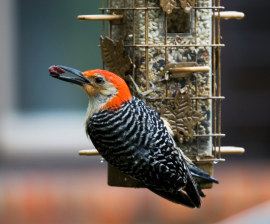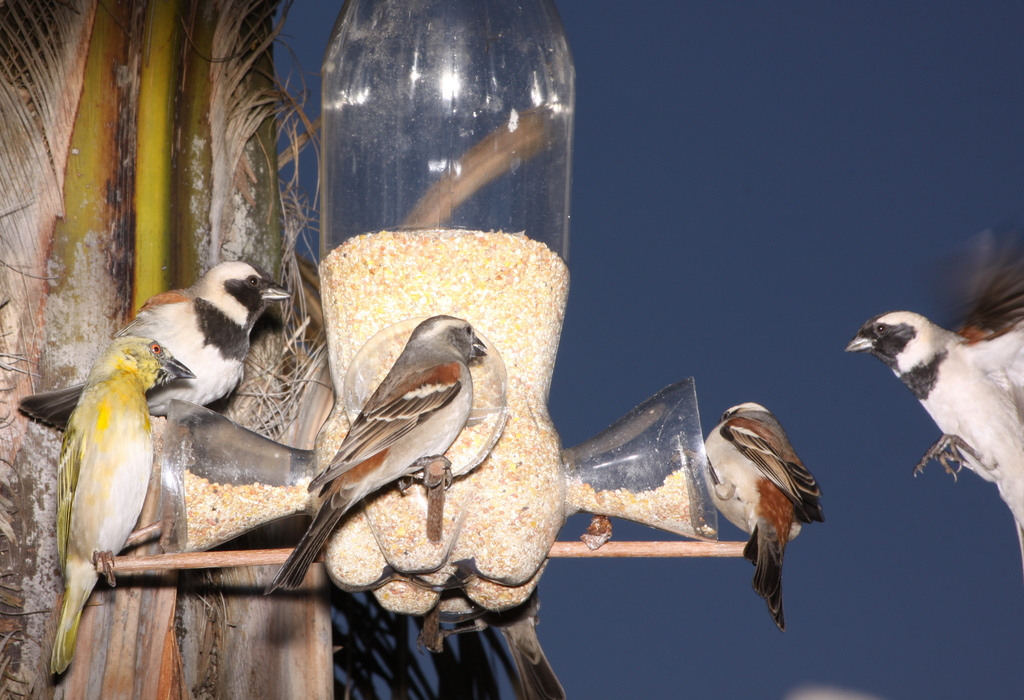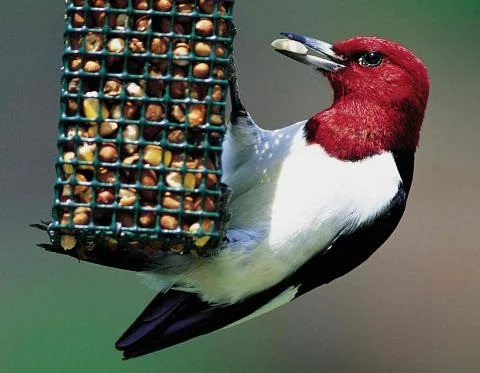There are no hard and fast rules about feeding birds; after all, they have evolved to feed opportunistically on a variety of foods in a wide range of habitats. Some are specialists, of course, but for the birds likely to visit your bird feeder, there are just some general good practice hints that will assure you get the greatest variety of birds and that they are fed properly.
Be sure to use fresh food and keep feeders clean. Moldy or infested food is neither appealing nor healthy. Some of the links below will give you details on the kind of food you should offer although just a generic bag of bird seed from your local feed store will usually do just fine.
Place feeders at least 4-5 feet above ground height to discourage predators. Either right next to a window or very far away from it will minimize the chances of a bird flying into a window.
After putting up a feeder, it may be months before you have a visitor; it sometimes takes that long for birds to find and feel secure about using a feeder. Fall and winter are the best times for feeding birds. There may be long periods in the summer when the feeder is not used because birds have other sources of food .
Hummingbird nectar need not be red. A red feeder or a red ribbon tied around the feeder will do. A dilute solution (5:1 water to sugar) is sufficient. A weaker solution is fine but a stronger solution may cause sugar crystals to form on a bird’s bill, creating the potential for bacterial infection.
Feed regularly. Although birds can usually find other sources of food, they are more likely to visit your feeder regularly if the feeder is usually full. See Hummingbirds.net.

Bird predators such as Sharp-shinned Hawks may visit the feeder and prey upon the other birds. Research has shown that the survival rate of birds who have an accessory source of food from a bird feeder is greater than those who do not have such access even though the predation rate is higher. In other words, starvation is a greater risk than predation.
Finally, there is no magic menu; different seeds and different mixtures of seeds attract different birds.
Look for lots more information on the links below and Cornell’s Feederwatch Program.
For more scientific information on feeding and nutrition, visit the ornithologist’s lecture on the subject.

More Information on Feeding Birds
Acorn Mulch
Backyard bird feeding
Bird feeding basics
Bird Feeder Cam
Bird Feeding and Foods
Care and Feeding of Baby Birds
Choosing Bird Food
Feed the Birds Day- RSBP
Feed the Birds – song from Mary Poppins
Feeder Watch
Guide to Winter Bird Feeding
Index of Birds by Diets
National Bird Feeding Society
Pine Cone Bird Feeder
Project Feeder Watch
Suet Recipes
Tips on How to Choose the Right Garden Feeder
Top Ten Bird Feeding Mistakes
What to Feed Birds
What to feed the birds


Glad to see some information about how to safely put up bird feeders! I agree that bird feeders should be placed high up from the ground and should help prevent the birds from flying into windows based on how they are placed. I’ve always wondered if you could put other types of foods in the feeders depending on specific diets of some birds, though I don’t think it’d be all too safe for the birds.